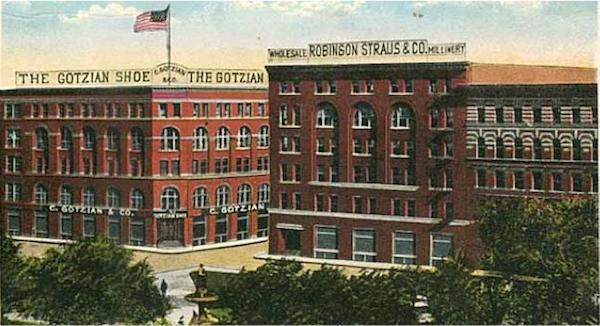
Restoring Lowertown’s ‘ghost signs’
By Thomas F. Surprenant, Stahl Construction Company
Receiving a grant from the Knight Foundation to restore and conserve some of the historic “ghost signs” in St. Paul’s Lowertown has been enjoyable and rewarding, though it also brings challenges that have kept me awake at night. Where do I find the matching funds? How does Stahl Construction, a for-profit company, qualify as an applicant for philanthropic dollars? When do I find the time to write grant applications? Lots of challenges! But, since it was cold and gloomy outside more often than it was warm and sunny in the colder-than-average month of February here in Minnesota, I think I’ll cover some of the fun stuff in this blog.
So far, I have thoroughly enjoyed meeting many of the wonderful people who are dedicated to gathering, preserving, and sharing Lowertown’s history. I had a great time talking history and vision with Kevin Barta and his wife, Kat, who took time during one of their short visits to St. Paul to meet with me. They are two of the three masterminds, along with Kari St. Claire, behind the creation of Lowertown Landing, a non-profit supporting the growth and rejuvenation of Lowertown. Kevin’s work has taken Kat and him to Washington, D.C., but they still have a condo in the Union Depot and their love of Lowertown and commitment to promoting this unique neighborhood are as strong as ever. Their website, lowertownlanding.com, contains an abundance of information about Lowertown, and the organization even offers popular tours of Lowertown in the summer months. I’m indebted to Kevin and Kat for an abundance of great suggestions and advice, and I’ve added taking a Lowertown tour to my to-do list for this project!
The fun I speak of has also included a meeting with Chad Roberts, the executive director of the Ramsey County Historical Society (RCHS), and Mollie Spillman, an archivist/curator at RCHS. Coincidentally, the RCHS is in the initial stages of a project to create an interpretive master plan for Lowertown, so the timing of our meeting couldn’t have been better. Chad, Mollie, and I had a delightful conversation covering history and preservation, while also tackling the best ways to use history and our historical legacy to enhance and support other community interests, such as development and growth.
In the fun category, too, were several great conservations with Amy Spong, Heritage Preservation Specialist for the City of St. Paul. Amy clearly sees the beneficial relationship that is possible between preservation and growth. Her job, of course, is to remind developers, business owners, policymakers, and others of the importance of history and its preservation. Unfortunately preservation is not always viewed as the friend of commercial development, but this is a narrow view. In truth, the expenses that must be incurred to assure historic preservation may sometimes feel like a hindrance to new development, but the long-term public benefit of holding onto our history has a continuing value that is immeasurable. Having grown up in Newport, RI, an old city that often feels the temptation to sacrifice history for the sake of expediency, I have firsthand experience with the importance of preserving history while growing.
This is why I love Lowertown Landing’s mission statement, “… supporting the continued growth and rejuvenation of the Lowertown historic district of Saint Paul, Minnesota.” That word, rejuvenation, suggests what can happen when you bring the past back to life in the midst of a living, breathing, growing community. The “ghost signs” in Lowertown are like the wrinkles, scars, and sun marks you see on an aged face; they tell a tale that makes the face more interesting and uniquely personal. Restoring the “ghost signs” gracing the walls of historic buildings—buildings occupied by artists and arts organizations, small businesses, neighborhood residents, and others—will create a visible, living connection between present and past. They will add character to the place and make it more alive.
Recent Content
-
Artsarticle ·
-
Artsarticle ·
-
Artsarticle ·

